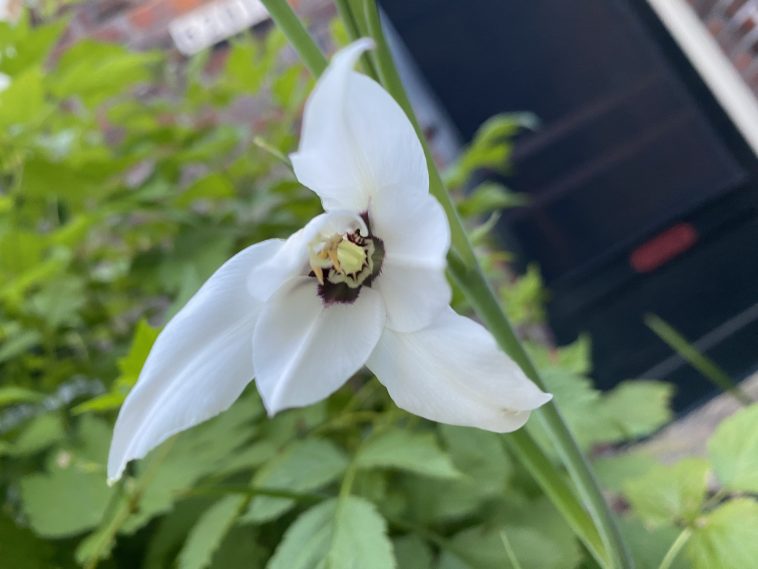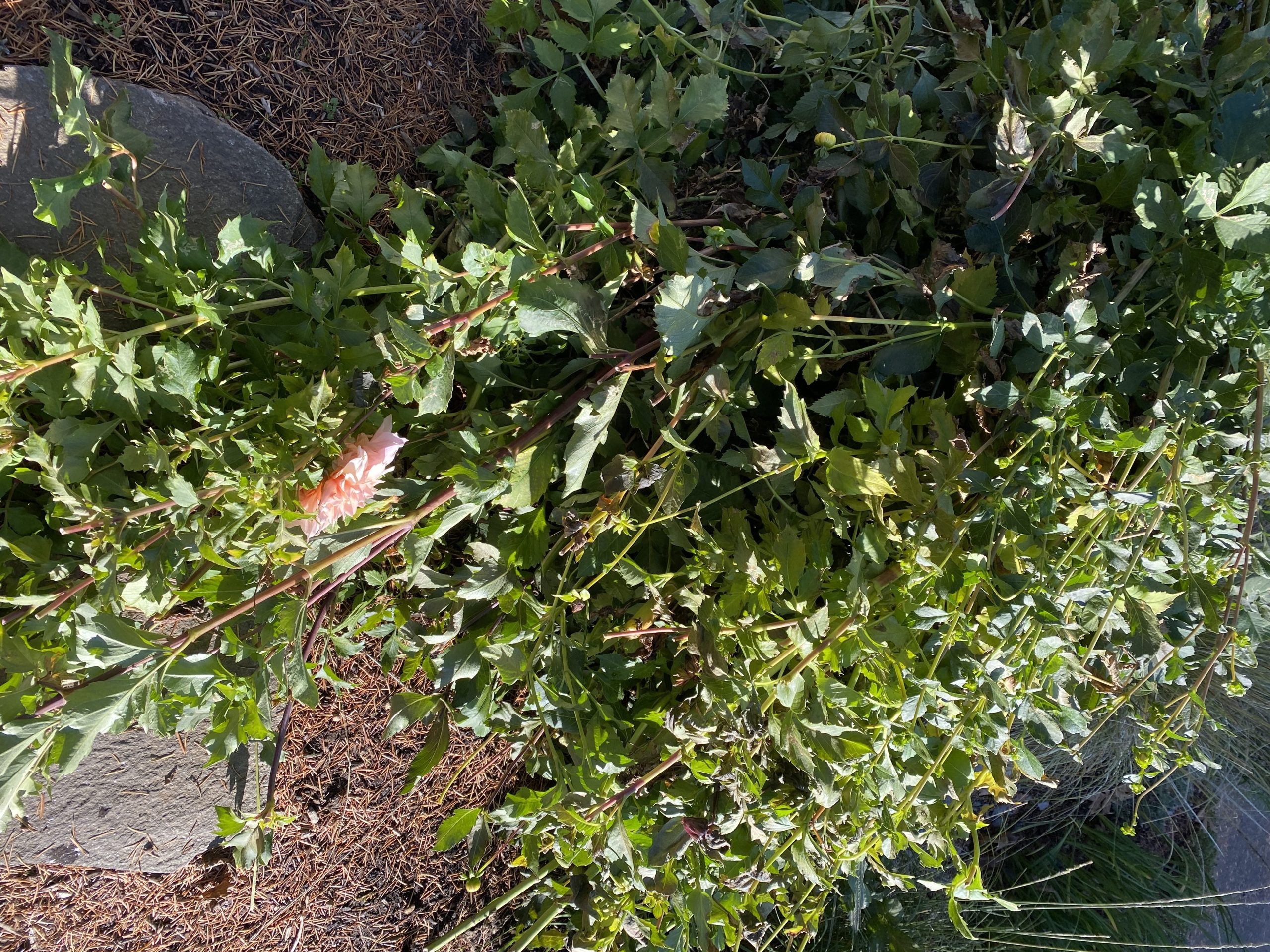The Apostrophe Blog
There is a spectacularly bright full moon out there on this chilly, late November night. Yesterday, I cut the final dahlia blooms of the season. They were looking a little ragged after a few nights of just-around-freezing temperatures and cold wind. Then I tackled the plants with my new, awesome Felco secateurs—they made swift work of stems and stalks I then hauled to a single pile that soon reached almost four feet in height. That pile, along with six or so bags of big leaf maple leaves we raked—after the visiting grandchildren had fun jumping in them last weekend—went off in our 1999 Ford Ranger to Wood Waste Management this afternoon. There, the bed got emptied for $27 then filled again for $50 with bark mulch that we will distribute tomorrow after we unroll a layer of plastic over the cut-back tubers to keep them warm as possible for the coming winter months.
And yes, the dahlias had a spectacular, showy season that led to many compliments from people walking by. And yes, it was fun to cut flowers and put them out on milk crates for passersby to take home and enjoy. But the true surprise of this flower-growing year was the bloom at the top of this post—the last one was finally done flowering today—an unusual, fragrant heirloom gladiolus that hails from Ethiopia and reached these shores by 1888. I planted ten bulbs back in the spring when they arrived from Old House Gardens in Ann Arbor, Michigan. Who knew they would turn out to be the most talked-about addition to the front gardens with their lanky stalks and blossoming staying power? People who saw them did not know what to make of them, thought they were orchids, a weird delphinium, a curious native plant. I would agree, as the blurb from the Old House Gardens catalog says below, that even glad-haters (me mostly) love this flower. All hail, G. callianthus, surprise star in spite of your competition with your seventy-plus showy dahlias neighbors.
 | G. callianthus, Abyssinian gladiolus 1888 A fragrant glad? Yes! And it’s so graceful and different that even glad-haters love it. Its exotic, late-blooming, ivory flowers with purple hearts dip and sway on sturdy, arching stems. Collected from the mountains of Ethiopia in 1844, it reached America by 1888 when it was featured as brand new in Garden and Forest magazine. Formerly Acidanthera, now Gladiolus callianthus ‘Murielae’, 3-4 feet, from Holland. |
- Don’t Fence Me In! - July 5, 2025
- Nothing to Celebrate Today… - July 4, 2025
- Call It By Its Name - July 2, 2025


